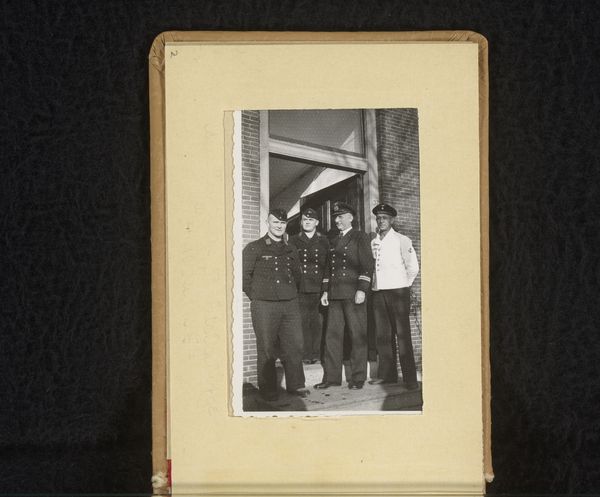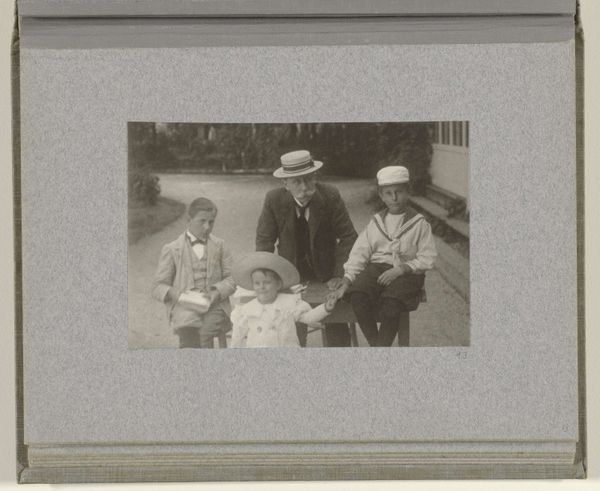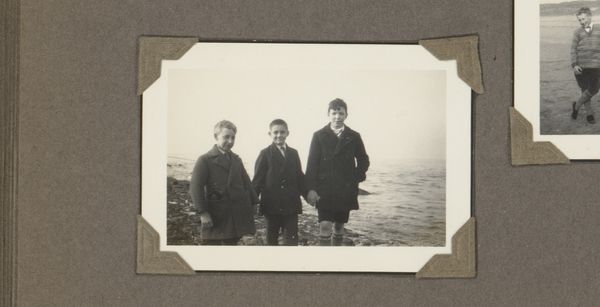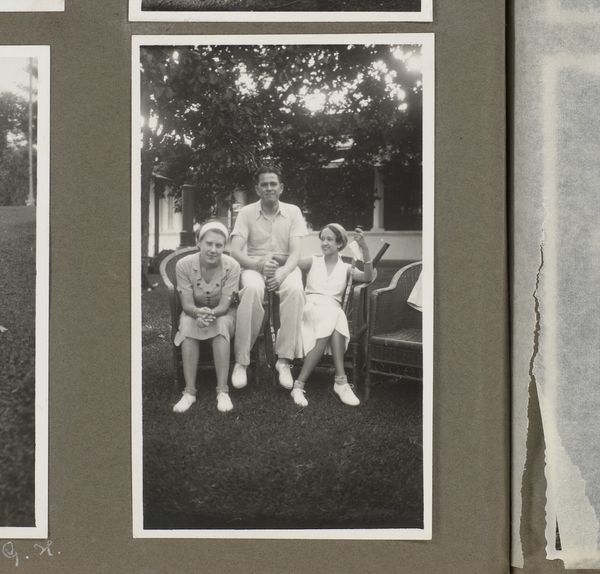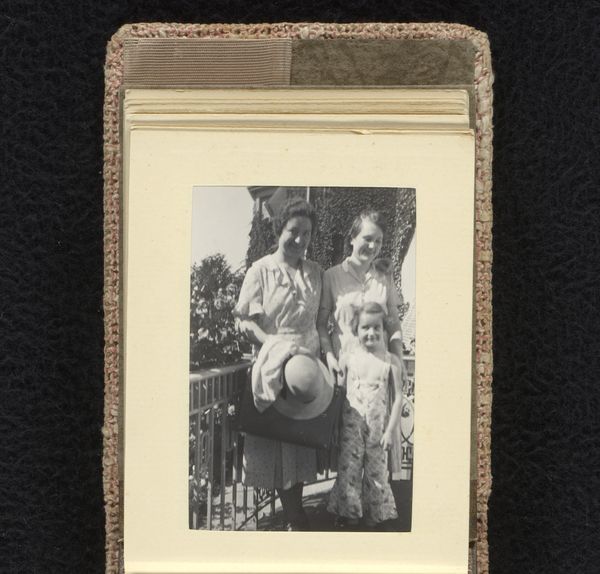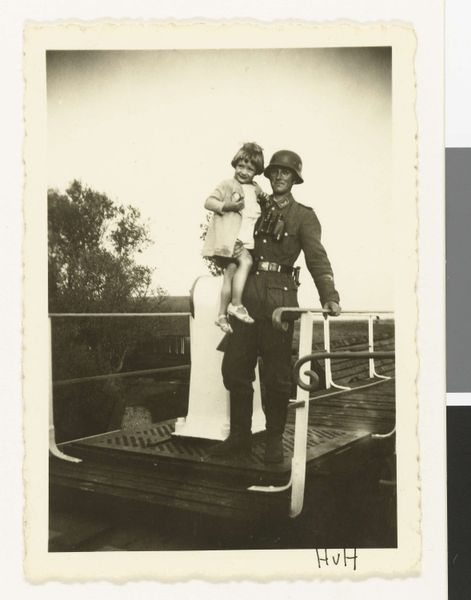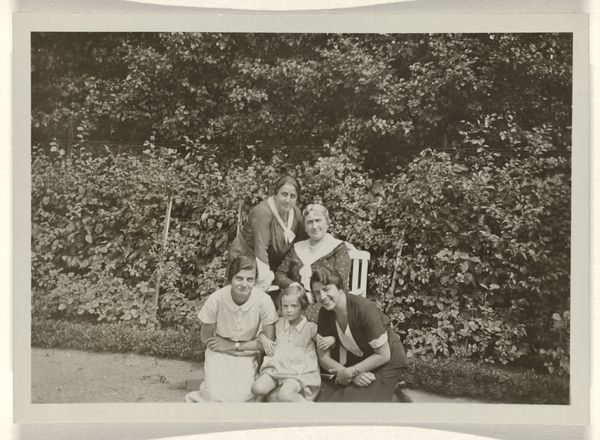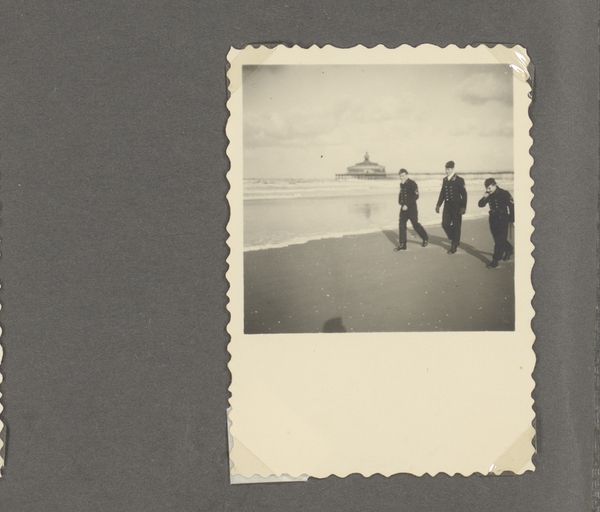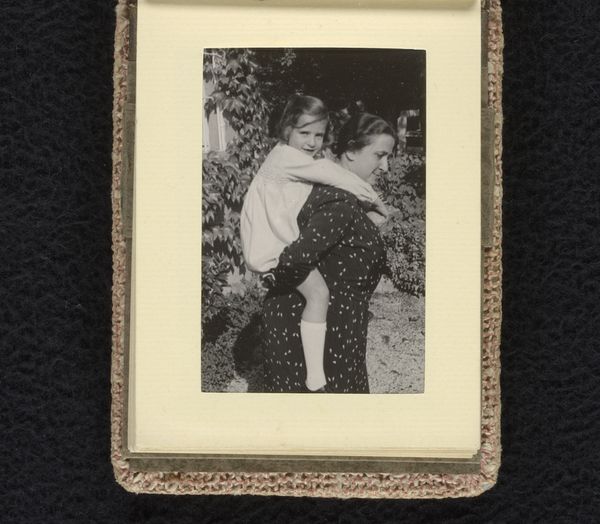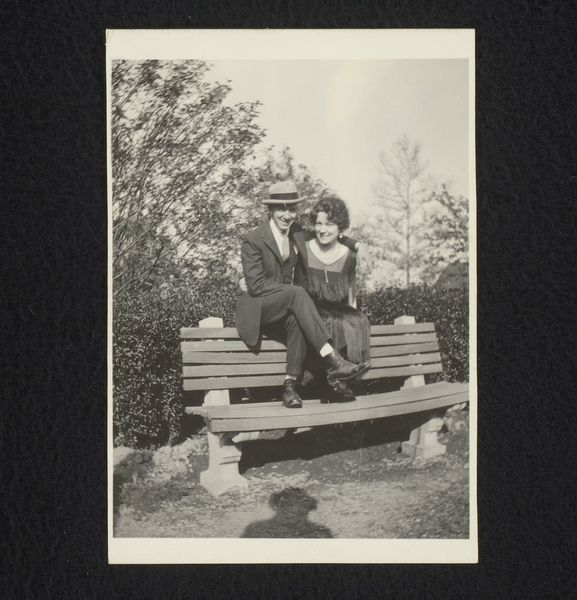
Drie jongens bij een strandpaal, twee aan weerszijden en Dicky Baud erop 1930 - 1935
0:00
0:00
photography, gelatin-silver-print
#
portrait
#
archive photography
#
photography
#
historical fashion
#
gelatin-silver-print
#
genre-painting
Dimensions: height 74 mm, width 52 mm
Copyright: Rijks Museum: Open Domain
Editor: This gelatin-silver print, titled "Three boys by a beach pole, two on either side and Dicky Baud on it," was created sometime between 1930 and 1935. The boys are all smartly dressed. I wonder what the story is here; it feels like such a specific pose they are striking. What do you make of this image? Curator: It is fascinating how staged it appears, despite its seemingly casual setting on the beach. Photography in the 1930s held a different social significance than it does today. It often functioned as a record of social aspirations, carefully constructing identities for public consumption. Editor: So you see this less as a candid shot and more as a curated image, if you will? Curator: Precisely. The fact that one boy, Dicky Baud, is elevated on the pole literally and symbolically positions him within a social hierarchy. The choice of attire is crucial; the ties and neat clothing suggest a desire to project respectability. We need to remember that the social and political landscapes during that time, the interwar period, were marked by considerable anxieties about class and social order. Photos like these were tools in negotiating and reinforcing those societal structures. Do you see echoes of that now? Editor: That makes a lot of sense. Now that you mention it, the formal clothing seems at odds with the beach setting. Maybe this photograph represents an ideal of social stability during uncertain times. What a simple yet powerful representation. Thanks for helping me think this through! Curator: Indeed, reflecting on the history behind this reminds us to look closely and question the surface of such photos and consider what societal roles images played then and how these have evolved.
Comments
No comments
Be the first to comment and join the conversation on the ultimate creative platform.
